|
|
ENVIS Technical Report 124, October 2017 |
CONSTRUCTED WETLANDS FOR TERTIARY TREATMENT OF WASTEWATER |
|
|
SUBMERGED PLANTS AND FLOATING ATTACHED PLANTS 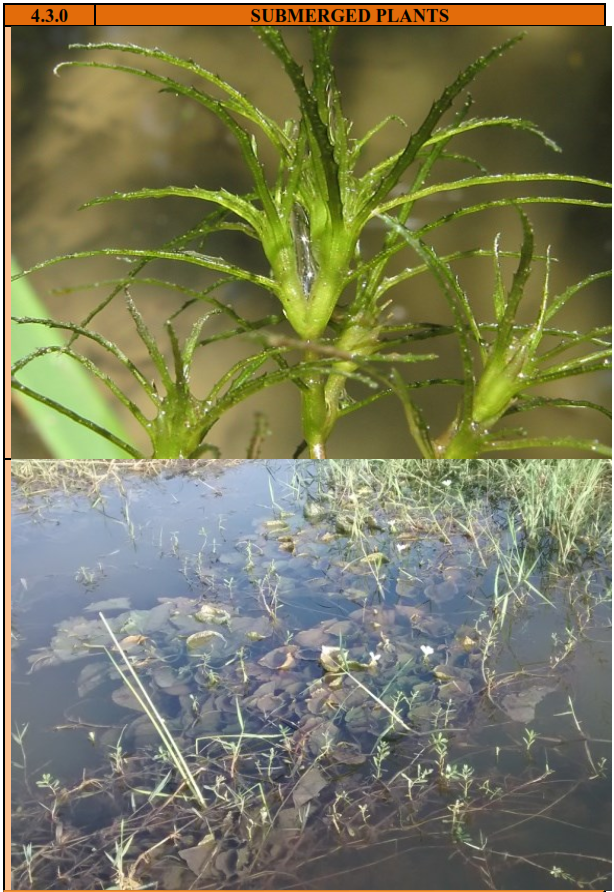
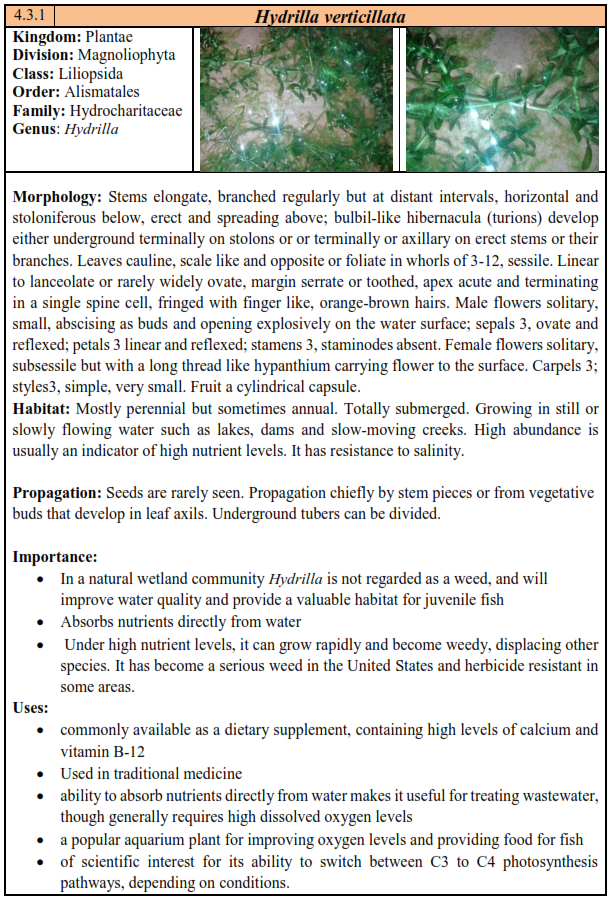
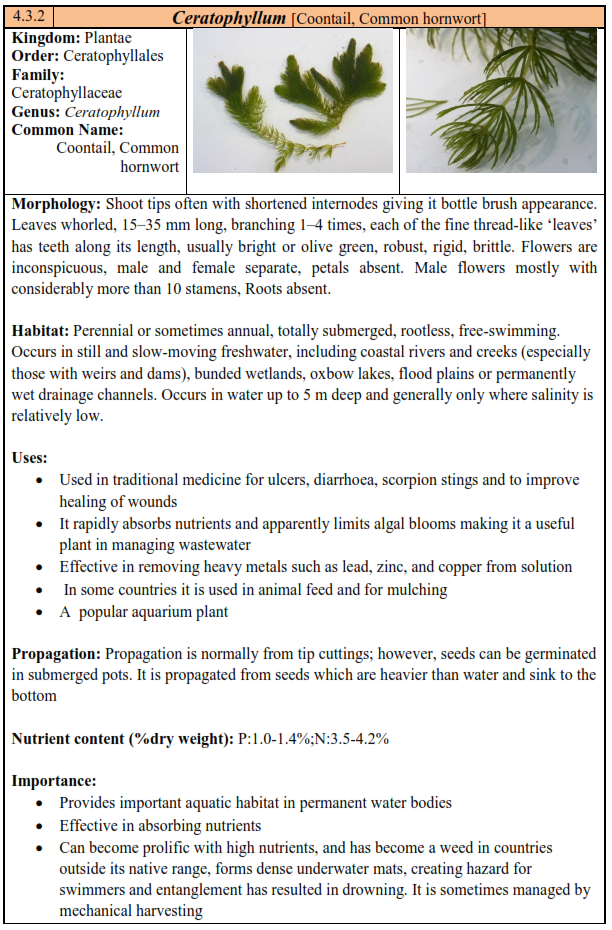
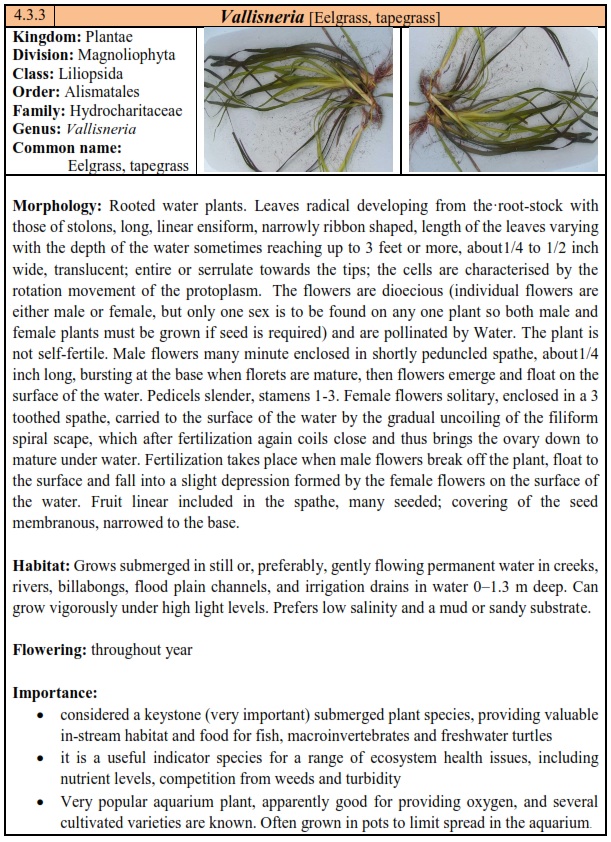
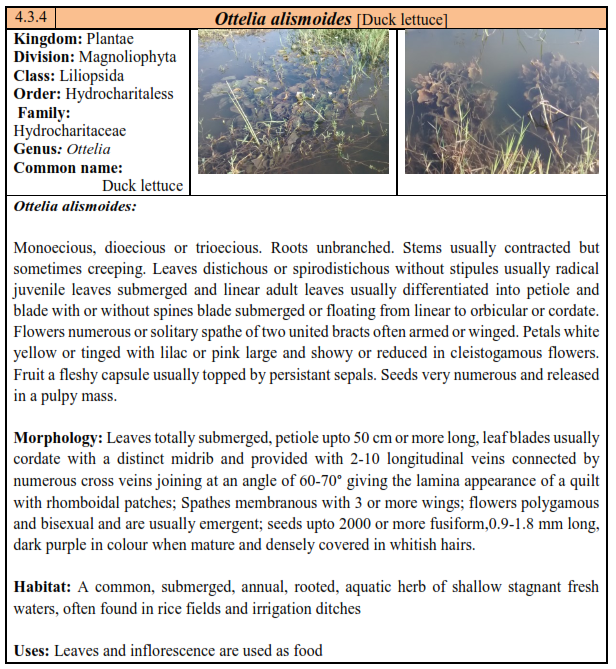
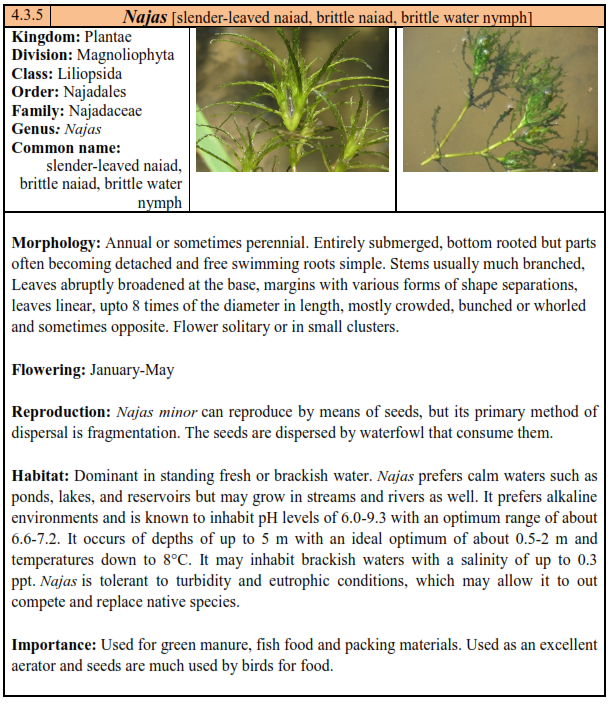
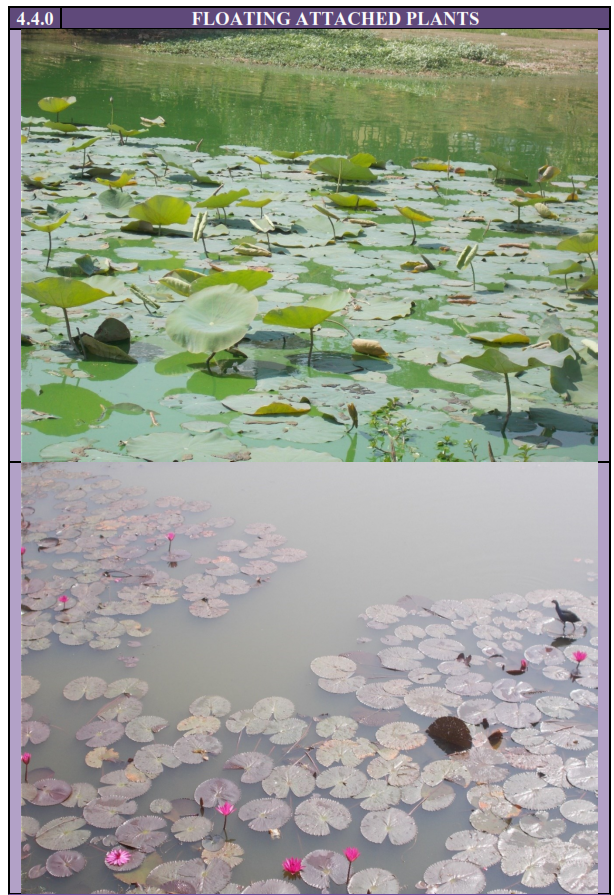

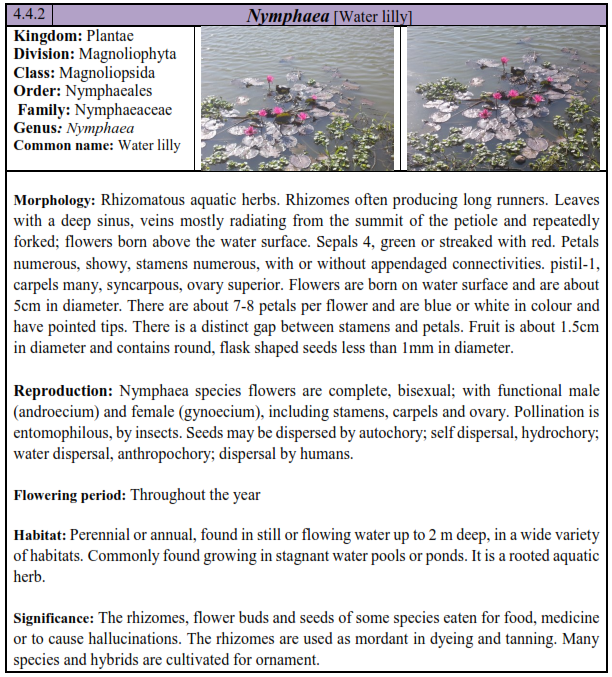
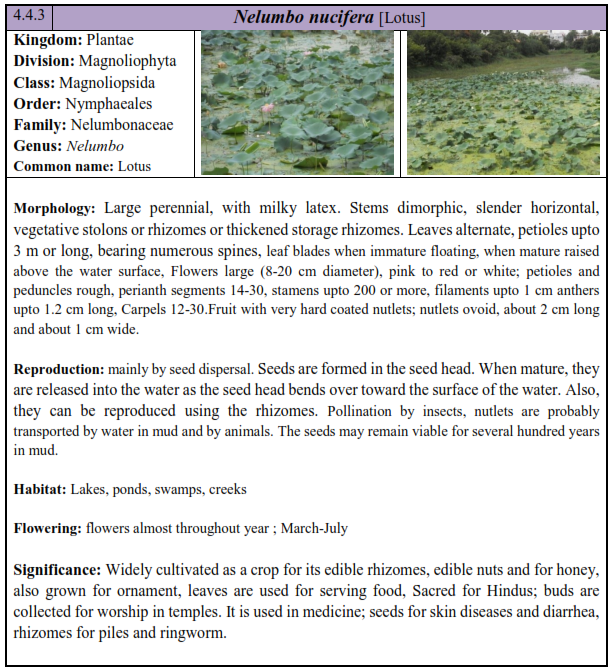
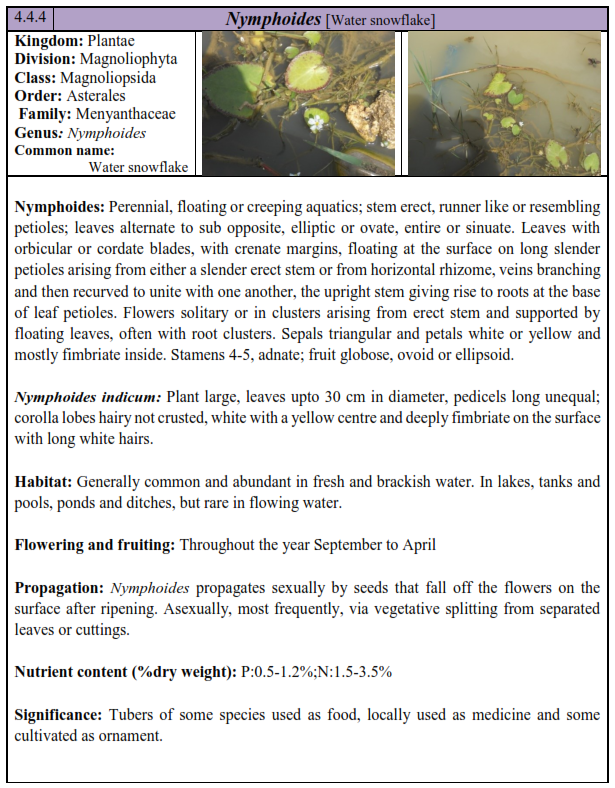
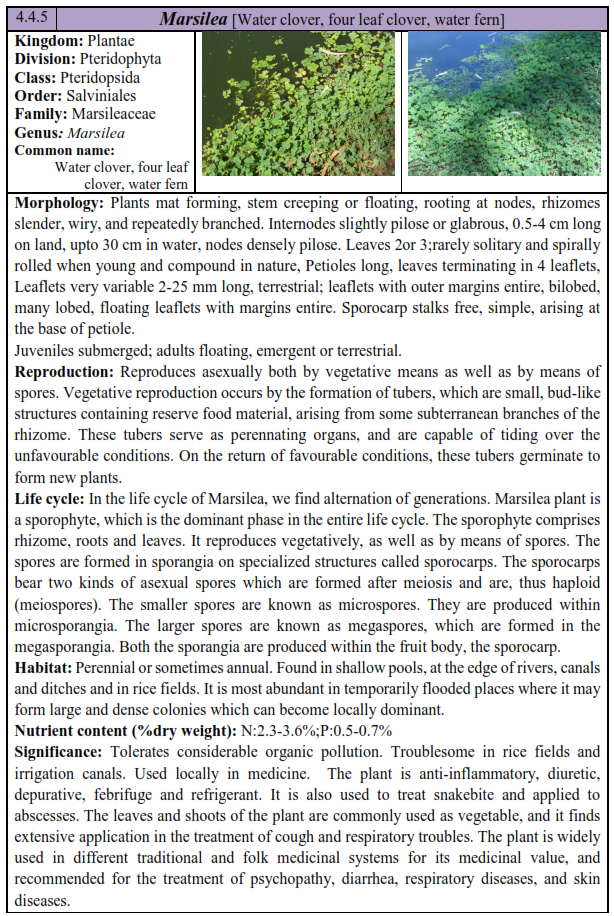
REFERENCES
- Annelise Gerber, Carina J Cillers, Carin Van Ginkel and Rene Glen (2004). Easy Identification of Aquatic Plants, Department of Water Affairs and Forestry, Pretoria.
- Arvind Kumar (2015). Freshwater Plankton and Macrophytes of India, Daya Publishing House, New Delhi.
- Biswas K and Calder C.C (1954). Handbook of common water and marsh plants of India and Burma, Second edition, Government of India Press, Culcatta.
- Christopher D. K. Cook, Aquatic and Wetland Plants of India- Oxford University Press New Delhi, 1996.
- Cowardin, L.M., Carter, V., Golet, F.C., and LaRoe, E.T. (1979). Classification of Wetlands and Deepwater Habitats of the United States, 103 pp. Washington, D.C. U.S. Department of the Interior, U.S. Fish and Wildlife Service.
- Cronk, J. K., & Fennessy, M. S. (2001). Wetland plants: Biology and Ecology. CRC press.
- Encyclopedia of life: eol.org
- Global invasive species database: http://www.iucngisd.org/gisd/
- Handbook of utilization of aquatic plants, FAO, http://www.fao.org/docrep/003/x6862e/X6862E11.htm
- Ramaswamy, S.V., & Razi, B.A. (1973). Flora of Bangalore District. Mysore University Press.
- Raja Chakraborty, Biplab De, N. Devanna, and Saikat Sen (2013), Antitussive, expectorant activity of Marsilea minuta L., an Indian vegetable, Journal of Advanced Pharmaceutical Technology and Research. 4(1): 61–64.
- Sven Erik Jorgensen (2009). Applications of Ecological engineering, Academic Press.
- Wetland plants of Queensland: A field guide: https://books.google.co.in.
|
Dr. T.V. Ramachandra
Centre for Sustainable Technologies, Centre for infrastructure, Sustainable Transportation and Urban Planning (CiSTUP), Energy & Wetlands Research Group, Centre for Ecological Sciences, Indian Institute of Science, Bangalore – 560 012, INDIA.
E-mail : tvr@iisc.ac.in
Tel: 91-080-22933099/23600985,
Fax: 91-080-23601428/23600085
Web: http://ces.iisc.ernet.in/energy
Sudarshan P. Bhat Energy & Wetlands Research Group, Centre for Ecological Sciences, Indian Institute of Science, Bangalore – 560 012, INDIA.
E-mail: sudarshanb@iisc.ac.in
Vinay S.Energy & Wetlands Research Group, Centre for Ecological Sciences, Indian Institute of Science, Bangalore – 560 012, INDIA.
E-mail: svinay@iisc.ac.in
Citation:Ramachandra T V, Sudarshan Bhat and Vinay S, 2017. Constructed Wetlands for Tertiary treatment of Wastewater, ENVIS Technical Report 124, Energy & Wetlands Research Group, CES, Indian Institute of Science, Bangalore 560012
| Contact Address : |
| |
Dr. T.V. Ramachandra
Energy & Wetlands Research Group,
Centre for Ecological Sciences, TE 15, New Biology Building, Third Floor, E Wing, [Near D Gate], Indian Institute of Science, Bangalore – 560 012, INDIA.
Tel : 91-80-22933099 / 22933503-extn 107
Fax : 91-80-23601428 / 23600085 / 23600683 [CES-TVR]
E-mail : tvr@iisc.ac.in, energy@ces.iisc.ernet.in,
Web : http://wgbis.ces.iisc.ernet.in/energy |
|











